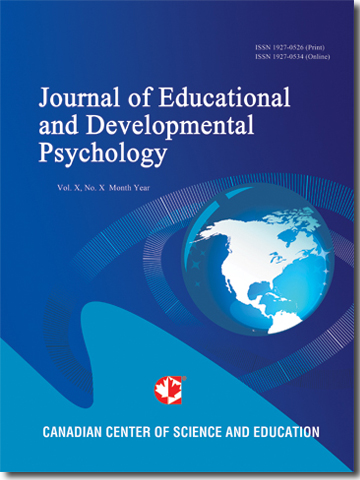An Overview of Teachers’ Development and Secondary School Effectiveness in Ekiti State, Nigeria
- Rose Nkem Tilije
- Adeyemi Oluwatoyin Victoria
Abstract
The study examined teachers’ development and secondary school effectiveness in Ekiti State, Nigeria. The study sought to establish the relationship between teachers’ development training and secondary school effectiveness in Ekiti State. Descriptive research design of survey type was adopted in the study. The population of the study comprised all the teaching staff (teachers and principals) numbered 5,908 in public secondary schools in Ekiti State. The total number of public secondary schools in Ekiti State was 202. The sample of the study was made up of 240 teachers and 24 principals selected from 24 public secondary schools in each of the three senatorial districts in Ekiti State. Multistage sampling procedures which involved simple random sampling and stratified random sampling techniques were used to select sample of the study. The instruments tagged Teachers’ Development Training Questionnaire (TDTQ) and Secondary School Effectiveness Questionnaire (SSEQ) were used to collect data. The instruments were validated and found reliable with the reliability coefficient of 0.84 and 0.86 respectively. Descriptive statistics of frequency counts, percentages scores, mean and standard deviation were used to answer the research questions and Pearson’s Moment Correlation was used to test the hypothesis at 0.05 level of significance. The findings of the study revealed that there is a significant relationship between teachers’ development and secondary school effectiveness in Ekiti State. Based on the findings and conclusions of the study, it was recommended that regular and relevant teachers’ development programmes should be organized for secondary school teachers in order to ensure continuous quality education delivery and secondary school effectiveness.
- Full Text:
 PDF
PDF
- DOI:10.5539/jedp.v14n2p21
Journal Metrics
(The data was calculated based on Google Scholar Citations)
1. Google-based Impact Factor (2021): 1.11
2. h-index (December 2021): 29
3. i10-index (December 2021): 87
4. h5-index (December 2021): N/A
5. h5-median (December 2021): N/A
Index
- Academic Journals Database
- CNKI Scholar
- Copyright Clearance Center
- CrossRef
- Elektronische Zeitschriftenbibliothek (EZB)
- EuroPub Database
- Excellence in Research for Australia (ERA)
- Harvard Library
- Jisc Library Hub Discover
- JournalSeek
- JournalTOCs
- LIVIVO (ZB MED)
- LOCKSS
- MIAR
- Open Access Journals Search Engine(OAJSE)
- PKP Open Archives Harvester
- Publons
- ROAD
- Scilit
- SHERPA/RoMEO
- Standard Periodical Directory
- Stanford Libraries
- Technische Informationsbibliothek (TIB)
- UCR Library
- UoB Library
- WorldCat
- Zeitschriften Daten Bank (ZDB)
Contact
- Carol WongEditorial Assistant
- jedp@ccsenet.org
